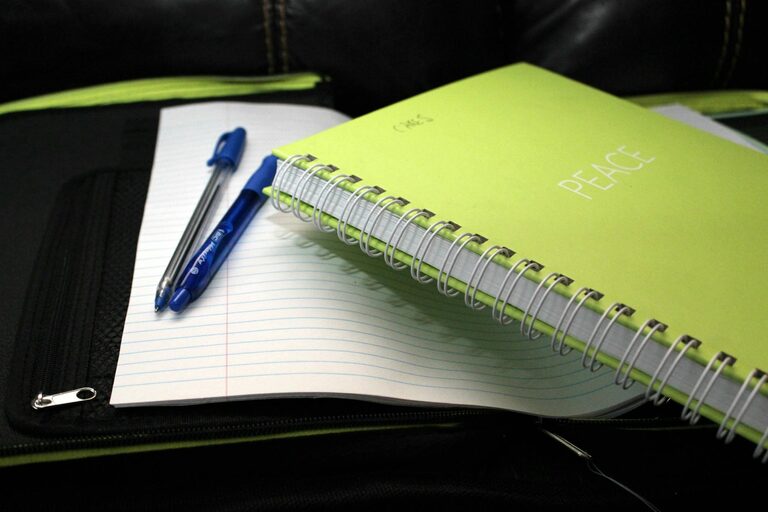Beginner Guide to Bullet Journaling: Organize Your Life Creatively

Bullet journaling has become a popular way to combine organization, creativity, and mindfulness all in one simple notebook. If you’re looking for a flexible method to plan your days, track your goals, and keep your thoughts in order, starting a bullet journal might be the perfect fit.
In this beginner’s guide, we’ll cover what bullet journaling is, the essential supplies you need, the basic structure, and tips to help you create a system that works for you.
What Is Bullet Journaling?
Bullet journaling is a customizable analog system created by Ryder Carroll, designed to help you keep all aspects of your life in one place — from daily tasks and appointments to long-term goals and reflection.
Unlike traditional planners, bullet journals are made by you, for you. They can be minimalist and purely functional, or highly decorative and expressive. The core idea is to use short, simple notes or “bullets” to record and organize your information.
Why Start a Bullet Journal?
– Flexibility: You create your layouts, topics, and style — there are no strict rules.
– Personalization: Customize exactly what you need, whether it’s habit tracking or creative doodles.
– Productivity: Helps you stay on top of tasks and prioritize important goals.
– Mindfulness: Encourages reflection and intentional living.
Supplies You’ll Need
Starting your bullet journal doesn’t require fancy tools. Here’s what you’ll want:
– Notebook: Choose one with dot grid pages for easy structuring, or plain/ruled if preferred.
– Pen: A good quality pen that won’t bleed through pages. Many like fine liners or gel pens.
– Ruler: Optional, but handy for drawing straight lines.
– Markers or colored pens: For highlighting or adding color if you like.
You can keep it simple and add supplies as you get more comfortable.
Core Components of a Bullet Journal
1. Index
Your table of contents for the journal. Number your pages and note where different sections are located so you can find everything easily.
2. Future Log
A place to jot down upcoming events, appointments, or deadlines that are weeks or months away.
3. Monthly Log
This includes a calendar overview of the month and a task list with things you want to accomplish during that time.
4. Daily Logs
The heart of your journal. List your daily tasks, events, and notes. Tasks are usually represented by bullet points, and you can use symbols to mark different types of entries (e.g., a dot for tasks, a circle for events).
5. Collections
These are custom lists or pages for specific topics such as book lists, habit trackers, meal plans, or mood logs.
Basic Symbols You Can Use
To keep things clear and consistent, many people use simple symbols:
– • (Dot): Tasks
– ◦ (Circle): Events
– – (Dash): Notes
– X: Completed task
– > (Right arrow): Task migrated forward to another day
– < (Left arrow): Task scheduled back to future log or previous day
Feel free to adapt or invent your own symbols to fit your style.
Setting Up Your First Bullet Journal
Step 1: Number Your Pages
At the top or bottom corner, number each page as you go. This is important for the index.
Step 2: Create Your Index
Leave about two pages at the start for an index, where you will list topics and page numbers.
Step 3: Set Up Your Future Log
Divide a couple of pages to represent upcoming months. For example, you might draw three months per page and list dates with events or appointments.
Step 4: Create Your Monthly Log
Start a new page for the current month. Write down the dates vertically and list events or tasks beside them. On the facing page, create a task list for the month.
Step 5: Start Your Daily Logs
Each day, write the date and add your to-dos, events, and notes. Use bullets and symbols to organize your entries. At the end of the day or week, review your tasks — check off completed ones, migrate unfinished ones forward, and reflect on progress.
Tips for Success
– Start simple: Don’t feel pressured to create artistic spreads or complex layouts right away.
– Be consistent but flexible: Bullet journaling should support your lifestyle, so adjust it as needed.
– Review regularly: Spend a few minutes weekly or monthly to update your logs and plan ahead.
– Make it personal: Add drawings, quotes, or stickers to keep it enjoyable and inspiring.
– Use collections: Track habits, goals, or hobbies that matter to you.
Example Collection Ideas
– Reading list
– Fitness tracker
– Budget planner
– Travel plans
– Gratitude log
– Meal planner
– Project timelines
Final Thoughts
Bullet journaling combines creativity and productivity into one customizable tool. With a bit of practice, you’ll develop a system that helps you focus, stay organized, and make space for reflection. Remember, the best bullet journal is one that works for you — so don’t be afraid to experiment and have fun along the way.
Happy journaling!




